


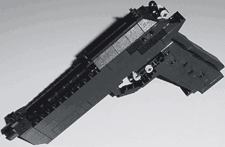 |
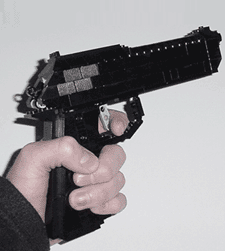 |
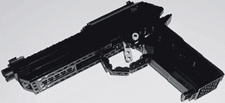 |
The information here covers up to the 3rd generation of the model's evolution, but we're now offering a 4th generation version for sale which includes easier-to-follow instructions and a sturdier design.
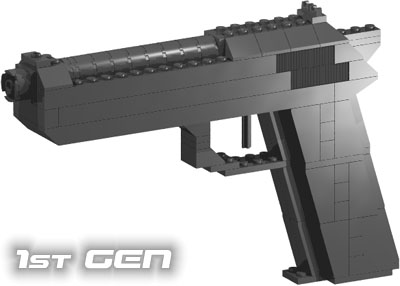
The 1st generation model was simply an exercise in form. It had no moving parts and was lacking quite a few details (this became apparent after hitting The Beretta Series 92 Page), but I was actually quite happy with what I had been able to accomplish.
The first model was also not very sturdy so I began to think about reinforcing the grip with internal Technic components. I have always liked the action of "racking" the slide on blowback semi-autos (you know, when our hero decides it's time to "kick some ass" and pulls back the top portion of the
weapon, loading a round in the chamber) so I started to think about incorporating a rackable slide as well.
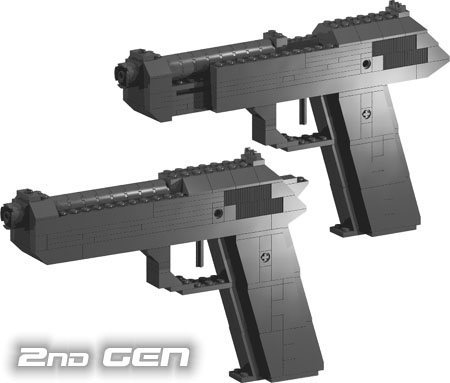
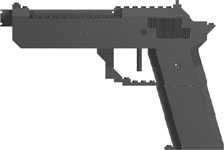
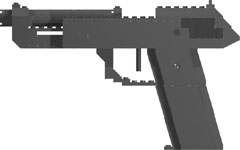
The Next Step:The 2nd generation model had a stronger grip (thanks to a Technic axle running through a few 2x2 round bricks inside) and a rubber-band-actuated slide mechanism. Pull back the slide and it snaps forcefully back into place.
I'm aware that the front of the slide doesn't remain in place on a real Beretta, but I couldn't find a way to get the barrel to go through the 2x2 slope elements and still look the way I wanted it to. I tend to favor form over function, so if it's a matter of destroying the "look" just to get something to operate realistically, I'll typically let style win.
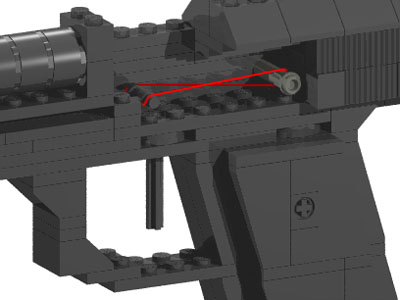
This cutout shows how the rubber band is connected inside the slide and breech to create the action. The band is shown in red for clarity, but in reality I used a medium-sized black. Trying different sizes and number of twists may be necessary to get the tension just right.
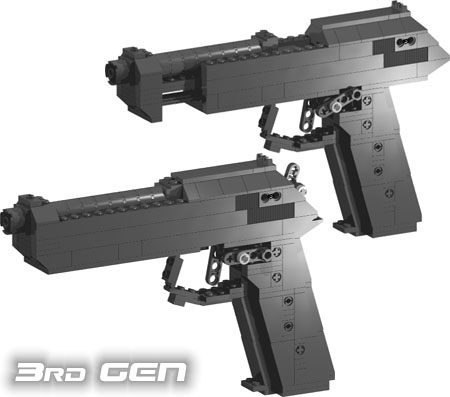
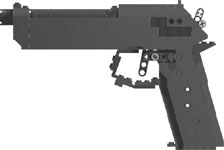
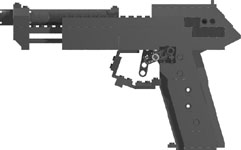
Bringing it
all together: When I decided to create the 3rd generation model I tried to incorporate as much of the mechanical workings of the gun as
possible. I wanted the slide to lock (just like an actual Beretta) using a small lever on the side of the grip. I also wanted a working trigger and hammer and hopefully the ability to create a double-action system that would remain true to the actual design. If I tried hard enough I was pretty sure I could fit everything in and even increase the strength and sturdiness of the overall design.
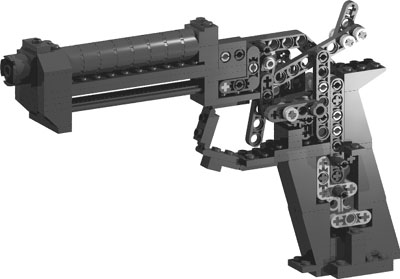
I totally redesigned the slide mechanism and how it joins to the breech. This allowed for more rubber bands to be connected internally without causing the gun to self-destruct, which would be essential since every action I had planned would rely on a rubber band for actuation.
I redesigned the internals of the grip using Technic liftarms connected to one another down the length so that the breech and grip became more unified.
The trigger guard was also redesigned to add strength and flexibility so it would resist breaking, although I don't know if I'm happy with this facet of the overall shape.
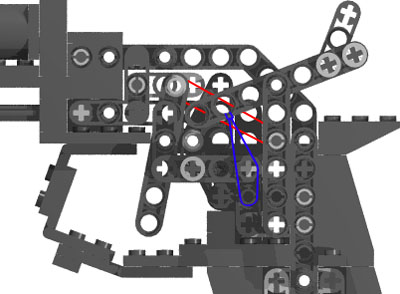
This closeup of the breech shows how the rubber bands are connected to create a functioning hammer/trigger. Again, the bands are shown in color, but in reality I used 2 small blacks.
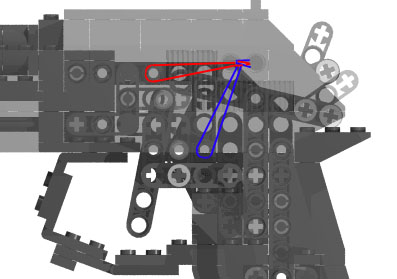
This composite closeup shows how the rubber bands are connected to the breech and slide, creating the rack action. The bands are once again shown in color but are actually small
blacks.
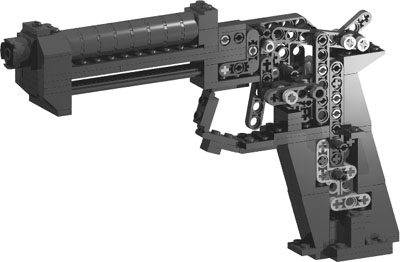
The hammer can be cocked either by pulling it down with the thumb or by "racking" the slide. Pulling the trigger then causes the hammer to flip up and hit the breech with an audible "click". This makes the gun a "single-action" weapon. True series 92 pistols are double/single action because pulling the trigger will also cock the hammer. I wasn't able to incorporate this in my model. Also, with real world pistols the "blowback" of a shot will cause the slide to retract, thus automatically cocking the hammer for another shot (hence, semi-automatic). The only way to create this process is to have bullets that are actually fired, which this model does not.
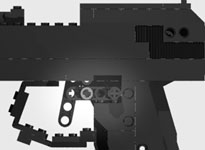
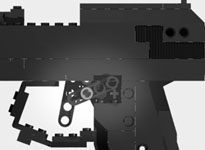 Once the slide is pulled back, it can be locked open by flipping up the lever on the side of the grip. On actual Berettas, the slide will lock open once the clip is empty. This is the time when you see our hero drop the clip, slip in another and then flip the lock lever, letting the slide close again with a round ready in in the chamber.
Once the slide is pulled back, it can be locked open by flipping up the lever on the side of the grip. On actual Berettas, the slide will lock open once the clip is empty. This is the time when you see our hero drop the clip, slip in another and then flip the lock lever, letting the slide close again with a round ready in in the chamber.
If you have any questions, feel free to email the designer at legoberetta@malagraphixia.com
